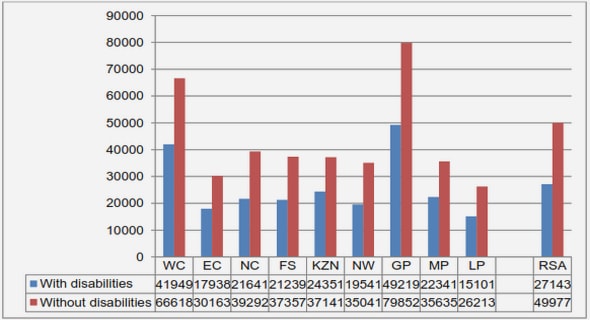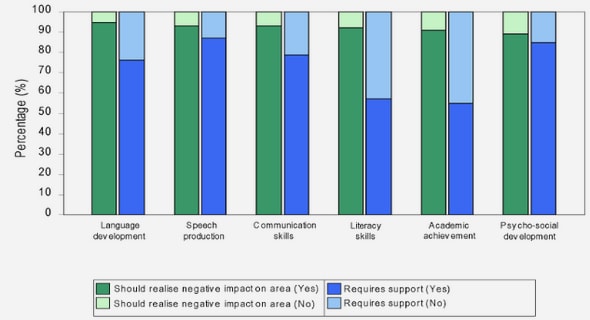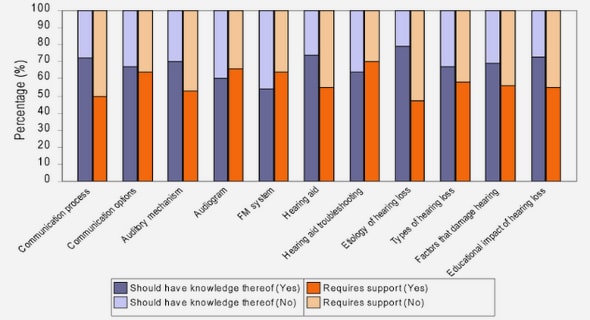Get Complete Project Material File(s) Now! »
Virulent phages
Virulent DNA phages possess either very large genomes, in the 80‐200 kb range, or very small ones (below 20 kb). Those of the T4 family belong to the large genome category; they have been largely sequenced, and compared to one another. They have a core genome, and the shared genes can be used to build evolutionary trees (Sarker et al. 2012). The rest of the genome of T4‐like phages is hyper‐plastic and encodes for genes probably implied in the adaptation to the host (Figure 4, regions that are not grey shaded) (Comeau et al. 2007). In fact, many of these genes have unknown functions. Somehow, the structure of T4‐like genomes is reminiscent of that of bacteria, with a common backbone and phage‐specific variable segments.
Figure 4: Genome organization of two virulent phages: RB49 and Aeh1 (T4 family). Genome maps of the phages are drawn to scale and, in each, the outer rings show the scales (in kb), the middle rings (yellow arrows) the T4 homologues, and the inner rings (red arrows) the ORFs with no homology to T4. T4 genes that have been rearranged (radiating blue bars) are indicated in their new locations. Various T4 genes are given as landmarks on the outside of the rings and the hyperplastic regions are indicated. The virion modules, tail fiber genes, replication modules and tRNA cluster are indicated by gray boxes. (Comeau et al. 2007).
A recent study showed that T4‐like Cyanobacteria phage genomes are prone to high levels of horizontal transfer, probably mediated by homologous recombination (Ignacio‐Espinoza, Sullivan 2012). Indeed, the T4 group of phages possesses genes encoding for a homologous recombination system. This system is similar but independent from that of the host (see below for further explanations).
Temperate phages
Temperate DNA phages fall into two genome categories: small sized genomes (4‐10 kb range), usually encapsidated as ssDNA (Roux et al. 2012), and medium sized genomes (20‐80 kb range), usually forming dsDNA virions. This last category has a genomic structure completely different from that of T4‐like phage genomes. It is impossible to delineate a shared backbone even among related genomes: rather, each genome seems to be composed by an assemblage of parts coming from recent horizontal transfers. The phage genomes are said to be “mosaic” ((Brussow, Canchaya, Hardt 2004) for review, Figure 5).
Figure 5: Alignment of the genetic maps from the L. lactis prophage bIL309 with the L. lactis prophage bIL286 and temperate L. lactis phage BK5‐T. The open reading frames are color coded according to their predicted function (Green, predicted DNA packaging and head morphogenesis genes; brown, predicted head‐to‐tail joining genes; dark blue, tail morphogenesis genes; light blue, tail fiber genes; mauve, lysis genes; black, predicted lysogeny conversion genes; red, lysogeny genes; orange, DNA replication genes; yellow, transcription regulation genes ). Selected genes or genomic features are denoted. Genes encoding proteins that showed significant amino acid sequence are linked by red shading, and the percentage of amino acid identity is indicated. The degree of amino acid identity (>90, >80, >70, or <70%) is reflected in the color intensity of the red shading. Inspired from (Proux et al. 2002).
The Hatfull team, helped with students, has been isolating numerous mycobacteriophages and sequencing their genomes. In 2011, 62 genomes were sequenced and compared. Each phage can be classified into one of 11 super groups depending on its genome structure and sequence homologies. Interestingly, although groups can clearly be delineated, genetic exchanges are observed between groups ((Pope et al. 2011). Recently, an upgrade with 471 phages led to the addition of 8 new super groups (Hatfull 2014)).
These authors think that genetic exchanges among phages are mainly due to illegitimate recombination: two phages in the same bacterium break and ligate their genomes to form a new viable phage. Other argued on the possibility that phage recombinases (see below) may play a role in these exchanges, because of their unique propriety to recombine diverged sequences, as described below (Martinsohn, Radman, Petit 2008).
Mosaicism among temperate dsDNA phages of Staphylococcus is remarkably extant (Kwan et al. 2005). A recent study tried to recreate the evolutionary history of 31 Staphylococcus aureus phages with the hypothesis of homologous recombination (Swenson et al. 2013). To do so, they truncated these phage genomes into segments. Each sequence of a segment is classified as an allele, called here variant, based on its identity (at least 94% of identity to belong to a group of variants, and at most 76% identity with any other variant). The basic postulate is that between two identical variants of the same segment, homologous recombination can occur and form a new mosaic phage from the two ancestral phages. They were able to observe these events and to recreate three ancestral phage genomes from the isolated phages, which exchanged genetic material with other phages.
Ways to exchanges genomes fragments
Different molecular processes will be described here, that can explain the mosaic formation among temperate phages. They will be presented starting from the mechanisms requiring little or no homology between the exchanged fragments (the broad “illegitimate recombination” category), up to those involving more extant homology stretches. Interestingly, in the phage world, the frontier between these two classical categories seems to be somewhat blurred.
Polymerase slippage
DNA polymerase can switch from a matrix to another if some homology (superior to 14nt) is present between the two ends of the recombination event. A model proposes that the polymerase stops due to the presence of a block, such as a hairpin structure. The replicated strand unwinds from its matrix, and if complementarity to the tip of the replicated strand is present downstream of the pausing site, annealing occurs. DNA polymerase binds again to the replicated strand extremity and resumes polymerisation ((Viguera, Canceill, Ehrlich 2001), Figure 6A). Poteete has proposed that phage recombinases play a role in conjunction with polymerase slippage: by catalyzing the annealing of a phage 3’‐ssDNA extremity with the lagging strand of the replication fork. The leading strand polymerase slips from the initial matrix to the phage strand, thanks to its close vicinity ((Poteete 2008), Figure 6B).
MMEJ (Microhomology‐Mediated End Joining)
MHEJ is a another way to repair double strand breaks involving an annealing step between the two ends, between small repeats of less than 10 pb. E. coli can promote this type of events at a low frequency of 10‐5 (Chayot et al. 2010). The authors transformed E. coli with a digested plasmid, mimicking a double strand break. They showed that the RecBCD exonuclease is essential for the reaction. RecBCD resects DNA at the DSB and exposes microhomologies that anneal each other, independently of the host recombinase RecA. Then the annealing product is ligated. An alternative MHEJ pathway has been proposed, which involves RecQ, a DNA helicase. This pathway can only be seen in an E. coli strain with a recB mutation, that leads to the loss of the RecBCD exonuclease activity but maintains the helicase activity (Ivankovic, Dermic 2012). RecQ would participate to the annealing of microhomologies. Due to it slow efficiency, MHEJ is a minor pathway in E. coli, that may take place when RecBCD exonuclease activity is inactivated and no sister chromatid, or no other homologous sequence, is available to perform a RecA‐dependent repair.
In an assay based on the selection of lambda prophage imprecise excision events (a process occurring in the absence of the prophage integrase gene), RecOR was also found to facilitate MHEJ, by annealing microhomologies (Shiraishi et al. 2002). In the same study, the authors also reported that the RecET pathway stimulates MHEJ by a factor of seven. These proteins are encoded by rac, a defective prophage in E. coli. The recET genes are normally silent, but become activated by a sbcA mutation, that brings a promoter upstream of recET. RecT is a recombinase, that performs single strand annealing (SSA) of complementary DNA sequences (see below), and RecE is a 5’‐3’ dsDNA exonuclease. They also saw that RecJ, a 3’ to 5’ ssDNA exonuclease, is essential in this reaction. Later, the same team found that the RecET pathway was inhibited by an uvrD mutation. They proposed that the UvrD helicase prevents the RecA loading and so enhances the illegitimate recombination by the RecET pathway (Shiraishi et al. 2006). These studies suggest that phage recombinases such as RecT may promote illegitimate recombination by MHEJ.
HR (Homologous recombination)
Homologous recombination should not be confounded with site‐specific recombination. In this last process, a specific DNA site is recognized and recombined by a resolvase or an integrase. Most temperate phages encode an integrase, which permits integration of phage in the host genome at an attB sequence (see the review in Annex). Homologous recombination is not sequence‐dependent, but relies on the homology between the DNA partners that recombine.
In 2010, phages genomes were analyzed to identify gene encoding protein catalyzing the homologous recombination events, named recombinases. Among 365 dsDNA phage genomes of a size superior to 20Kbp, 60% contained a recombinase (Lopes et al. 2010). By detecting distant homology between amino acid sequences, all recombinases were classified into three super families, Rad52, Rad51 and Gp2.5‐like proteins (these super‐families are described in details later in this chapter). The crystallographic structures for members of Rad51‐like and Gp2.5‐like recombinases have been solved (Hollis et al. 2001; Gajewski et al. 2011). None of any phage Rad52‐like recombinase has been crystallized to sufficient resolution up to now to permit 3D reconstitutions. The Redβ 3D model below is taken from Lopes et al. (Lopes et al. 2010). It was model on the human Rad52 Nt domain, which has been cristalized (Kagawa et al. 2002)(Figure 9). Several phage recombinases, belonging to the Rad52 and Gp2.5 families, are known to promote the single strand annealing (SSA) reaction ((Kmiec, Holloman 1981; Rezende et al. 2003; Datta et al. 2008; Ploquin et al. 2008) see paragraph III of this chapter for further explaination).
Regulation of the RecA filament
Regulation for the RecA filament occurs at two distinct steps. The first one is the regulation before filament formation, which is inhibited by SSB and promoted by RecBCD or RecFOR. The second is the regulation after filament formation, stabilized by RecX and disassembled by DinI, UvrD and maybe by RdgC (Figure 13).
It is usually admitted that SSB inhibits the RecA filament formation by binding the ssDNA before RecA. Indeed in vitro when both proteins are mixed together, SSB catches the ssDNA before RecA (Reddy et al. 2000). Nevertheless, if RecA is already nucleated on the ssDNA, SSB facilitates the polymerization of RecA by unwinding the secondary structures of ssDNA. A recent single molecule study (Bell et al. 2012) showed that RecA is able to nucleate on an ssDNA covered by SSB but with a high lag time (3 minutes) and a low nucleation rate. However, the RecA filament polymerization is not disturbed.
RecA has manners to overcome the SSB barrier. The first one relies on RecBCD activity. This complex is composed of three different proteins: RecB, that has helicase and nuclease activities, RecC, which recognizes a specific site on DNA called Chi, and RecD, which is an helicase. This heterotrimer detects DSB on DNA and degrades both strands until RecC recognizes a Chi site. RecBCD pauses on Chi sites and its activity changes to degrade only one of both strands. RecB loads RecA on the 3’ overhang DNA created before SSB come (Spies, Kowalczykowski 2006). The second one is the RecFOR pathway. RecF recognizes a single strand break on dsDNA. RecO can bind to ssDNA, RecF, RecR and SSB. A study showed it also anneals two complementary ssDNA, in the presence and in the absence of SSB (Kantake et al. 2002). RecR binds a dimer RecO. The idea here is that the RecOR complex either binds to SSB and moves it away to permit the nucleation of RecA, or binds to RecF which finds a ssDNA break on dsDNA and polymerizes RecA from the break (Morimatsu, Kowalczykowski 2003; Handa et al. 2009). Recent single molecule analyses showed that RecOR and RecFOR complexes decrease the lag of RecA nucleation and increase the polymeration rate (Bell et al. 2012).
Last years, the structure of RecOR was resolved (Radzimanowski et al. 2013) and revealed a ring structure composed by two RecO and four RecR. This ring rounds the ssDNA that permits to push SSB and nucleate RecA. RecX and DinI have antagonist activities. RecX is expressed in operon with RecA and has an inhibition activity. RecX binds to RecA and inhibits its polymerization, leaving it to its depolymerization, whereas DinI binds to RecA, and stabilizes the RecA filament preventing the depolymerization and promoting the polymerization (Lusetti et al. 2004; Renzette, Gumlaw, Sandler 2007).
UvrD is a helicase which dismantles the RecA filament (Veaute et al. 2005). UvrD prevents the polymerization of RecA at the replication fork in vivo. This may prevent the reannealing of the fork by RecA (Lestini, Michel 2007).
RdgC is the most ambiguous inhibitor protein. Some activities were shown in vitro, but no phenotypes were observed in vivo. Indeed, when RecA is competed by RdgC in vitro in the classic strand exchange reaction, RecA loses its activity proportionally to RdgC addition (Drees et al. 2006). The structure was resolved in 2007 (Briggs et al. 2007). It dimerizes to form a ring that rounds the DNA with a preference for the ssDNA. The idea is that RdgC slides on DNA and moves away RecA from DNA to inhibit its action.
Table of contents :
Chapter I: Introduction
I) Bacterial genomes
II) Bacteriophage genomes
1) History and definition
2) Genome organization
3) Ways to exchanges genomes fragments
III) Homologous recombination
1) History and definition
2) RecA
3) Phage recombinases
IV) All the questionings
Chapter II: Rad52 recombinases and mosaicism
Abstract
Introduction
Results
A recombination assay to measure formation of mosaics in phage λ
Mosaicism is produced by homologous recombination
Recombination genes involved in mosaism
Role of other phage encoded recombination promoting genes
Homologous recombination‐dependant gene shuffling also occurs with phage Φ80
Like Redβ and RecTΦ80, ErfD3 and RecTRac recombinases are efficient on diverged sequences
Genomic analysis reaveals abundant mosaics amond and between phage genomes
Discussion
Mosaic formation is driven by Rad52‐like phage recombinases
Contribution of accessory proteins Orf and Rap to recombination
Quantification of mosaics and traces of homologous recombination in phage genomes
Consequences for evolution
Materiels and Methods
References
Supplementary Text, Tables and figures
Chapter III: SSA activity of Sak4 recombinases
Abstract
Introduction
Material and Methods
Results
Temperate phage encoding Sak4 often encode an atypical SSB nearby
The SSBHK620 is essential for Sak4HK620 SSA activity in vivo
Both Sak4HK620 and Redβλ anneal up to 12% diverged sequences in vivo
Sak4 proteins are hardly soluble
The phage‐encoded SSB‐like proteins have affinity for ssDNA
GST‐Sak4PA73 does not degrade ATP
GST‐Sak4PA73 does not promote strand exchange, nor stimulates the RecA reaction
GST‐Sak4PA73 performs SSA in vitro, and anneals up to 20% diverged sigle styranded DNAs
Discussion
Sak4 has SSA activity
The in vitro SSA activity of RecAE.coli is inhibited in vivo
Redβλ and GST‐Sak4PA73 tolerate the presence of mismatches during SSA
References
Supplementary Text, Tables and figures
Chapter IV: Discussion
I) Mosaic acquisition: causes and consequences
1) Phage recombinases, a major cause of mosaïcism
2) Consequences on genomes
3) A new definition of phage species?
II) The phage core‐only RecA Sak4…
1) … compared with RecA
2) … compared with other core‐only RecA
III) Origin and distribution of recombinases
1) The ubiquitous RecA
2) The phage Rad52 domesticated by Eukaryotes
3) The virus‐only Gp2.5
IV) General conclusion
References


